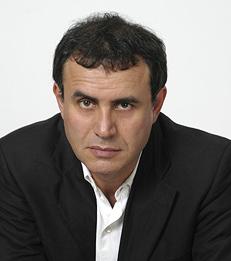Our Megathreatened Age.

By Nouriel Roubini
Since the publication of Megathreats in October 2022, the themes I emphasized have gone mainstream. Everyone now acknowledges that economic, monetary, and financial threats are rising and interacting in dangerous ways with various other social, political, geopolitical, environmental, health, and technological developments. Hence, in December 2022, the Financial Times chose “polycrisis” as one of its buzzwords of the year. Whatever one’s preferred term (others have adopted “permacrisis” or “confluence of calamities”), there is growing recognition that not only the global economy but also human survival is at risk.
As I warned in Megathreats, the “Great Moderation” (a long period of low macroeconomic volatility following the mid-1980s) has given way to the “Great Stagflation.” In 2022, we witnessed a surge of inflation in advanced economies and emerging markets, a sharp slowdown of global growth that continued into 2023, and signs of severe private- and public-sector debt problems as central banks raised policy rates to stabilize prices.
Owing to this monetary-policy tightening, inflation has fallen around the world; moreover, the impact of stagflationary short-term negative supply shocks – the pandemic, the commodity-price spike following Russia’s invasion of Ukraine, and China’s “zero-COVID” policy – has been gradually fading throughout 2023. But inflation remains well above the 2% target in advanced economies, and a dozen other medium-term negative aggregate supply shocks discussed in Megathreats have grown more severe.
Read the full Project Syndicate article.
___
Nouriel Roubini is a Professor Emeritus of Economics and International Business and the Robert Stansky Research Faculty Fellow.
